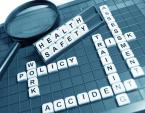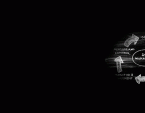Description
Holland provides Gap analysis report services through expert consultants who review company documentation, conduct site visits, and produce comprehensive gap analysis reports.
| Why Gap Analysis?
Gap analysis reports are valuable tools for identifying both the strengths of an organisation, such as areas where the company meets or exceeds expectations, and weaknesses, where the organisation falls short. A gap analysis report allows companies to pinpoint discrepancies between their current safety measures and the required standards they need to meet. These reports serve as self-assessment tools, ensuring that the company's safety practices align with current regulations and requirements. By analysing these gaps, companies can prioritise, address, and mitigate the identified issues, ultimately striving to prevent accidents, incidents, or fatalities. Gap analysis report helps companies to:
- Identify safety deficiencies
- Comply with regulations
- Mitigate Risk
- Improve Safety culture and safety scores
- Reduce Cost associated with accidents/incidents
- Identify training and development needs
- Enhance reputation and credibility
- Safety strategy Planning
| Process Involved
1. Request for Documentation:
The competent safety consultant from the Holland Group will first request all relevant safety documentation from the client. This typically includes:
- Safety policies and procedures
- Risk assessments and hazard identification
- Incident and accident reports
- Safety training records
- Safety equipment and maintenance logs
- Emergency response plans and drills
- Any audits or safety inspections already conducted
- Compliance records with regulatory bodies
- Contractor and employee safety induction documentation
2. Comparison with Regulations and Laws:
- The consultant will review the provided documentation against applicable local, regional, and industry-specific safety laws, regulations, and standards. This may include:
- During this comparison, the consultant will assess whether the client’s current practices align with these requirements.
3. Identification of Gaps:
The consultant will identify areas where the organisation’s safety protocols do not meet the required or recommended standards. This may include:
- Missing or outdated safety procedures
- Insufficient risk assessments or hazard controls
- Lack of proper employee training
- Non-compliance with specific safety laws or regulations
- Inconsistent incident reporting and tracking procedures
- Inadequate emergency planning
4. Recommendations for Improvement:
Based on the identified gaps, the consultant will provide recommendations to bring the organisation into full compliance with applicable safety laws and regulations. These recommendations might involve:
- Updating documentation and safety policies
- Implementing new safety protocols or procedures
- Providing additional training for employees
- Enhancing reporting and record-keeping processes
5. Report and Follow-up:
After completing the Gap analysis, the consultant will deliver a detailed report outlining the findings, including any non-compliance issues, and offering solutions. The organisation will then take steps to address these gaps, sometimes with further assistance from the consultant.
Ready to safeguard your workplace and ensure compliance? Partner with Holland Safety for expert gap analysis and consulting services tailored to Irish businesses. Contact us now to schedule a consultation and take the first step towards a safer, compliant workplace!
You Might Also Like
For any further information please call or e-mail us.



